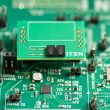

Borqs Technologies, Inc. has announced that it has completed the sale of its core businesses to Sasken Technologies, Ltd., a global product engineering and digital transformation services company based in India. Included in the sale were all of the Company’s embedded software design and customised hardware manufacturing of products for the Internet of Things (IoT) activities. Price for the sale totalled US$40 million, a portion will be reserved for employees, tax withholding and payments subject to an earnout arrangement linked to performance in the year 2025.
April 16, 2025
Posted by: Marion Webber

ITEN, an innovator and industrial player in the development and production of Surface-Mount Device (SMD) Solid-State Batteries (SBBs) for electronic markets, unveiled an advancement in energy storage. ITEN’s latest SSB achieves an unprecedented 200C discharge rate (200 times the battery’s capacity per hour) —100 times higher than conventional Li-ion batteries—setting a new benchmark for miniaturised energy storage. This technology is now being manufactured at scale to build the Powency product family, with the company’s high-volume production capabilities ready to meet growing demand for Internet of Things (IoT) and other connected devices across various industries.
April 11, 2025
Posted by: Marion Webber

Ayla Networks, a provider of smart home and Internet of Things (IoT) software platforms, has announced its partnership with Google Cloud to enhance scalability, reliability, security and innovation opportunities for Ayla’s global customers.
April 9, 2025
Posted by: Marion Webber

Vodafone has connected its 200 millionth Internet of Things (IoT) device, part of a secure worldwide network of smart devices and machines that monitor people’s health, protect endangered animals, thwart vehicle thefts and detect fires, floods and earthquakes.
April 8, 2025
Posted by: Marion Webber

PEAK3 Spectrum and ASUS IoT has announced a partnership that will integrate PEAK3’s Industrial ATSC 3.0 M.2 Receiver technology into ASUS Internet of Things (IoT)’s hardware platforms, creating new possibilities for smart cities and industrial automation.
(more…)
April 2, 2025
Posted by: Marion Webber

CyberArk and Device Authority, in collaboration with Microsoft, have launched a solution that strengthens and scales connected device authentication to enterprise applications with Zero Trust principles. It helps manufacturers reduce cyber risk from connected devices in factory floors and edge environments with robust identity security, automated access management and device lifecycle protection.
March 11, 2025
Posted by: Marion Webber

Terrestar Solutions Inc., one of the only Canadian mobile satellite operator pioneering the deployment of satellite hybrid Internet of Things (IoT) connectivity across Canada, has announced a partnership with Monogoto, a cloud-based cellular network provider. This collaboration will empower solution providers and enterprises to deliver reliable, scalable and resilient Hybrid IoT connectivity, ensuring devices remain connected to both cellular and satellite networks.
March 7, 2025
Posted by: Marion Webber

Syniverse, one of the world’s most connected company, has joined the Mobile Satellite Services Association (MSSA) — an industry effort to advance the development of direct-to-device (D2D) and Internet of Things (IoT) connectivity through an ecosystem of non-terrestrial network (NTN) providers that are committed to extending mobile coverage globally.
March 4, 2025
Posted by: Marion Webber

Asimily, an innovator in Internet of Things (IoT), OT and IoMT risk management, has announced the launch of its comprehensive IoT Patching solution, enabling customers to automate, standardise and streamline firmware updates across their connected device ecosystems. The new capability reduces security risks by simplifying the otherwise complex process of keeping heterogeneous IoT device fleets continually updated with the latest security patches.
Posted by: Marion Webber

Renesas Electronics Corporation, a premier supplier of advanced semiconductor solutions, has announced that it has obtained PSA Certified Level 1 certification with the European Cyber Resilience Act (CRA) compliance extension for three of its latest microcontroller groups (MCUs). This certification, evaluated by Applus+ Laboratories, marks a step in Renesas’ commitment to cybersecurity and compliance with upcoming European regulations.
March 3, 2025
Posted by: Marion Webber